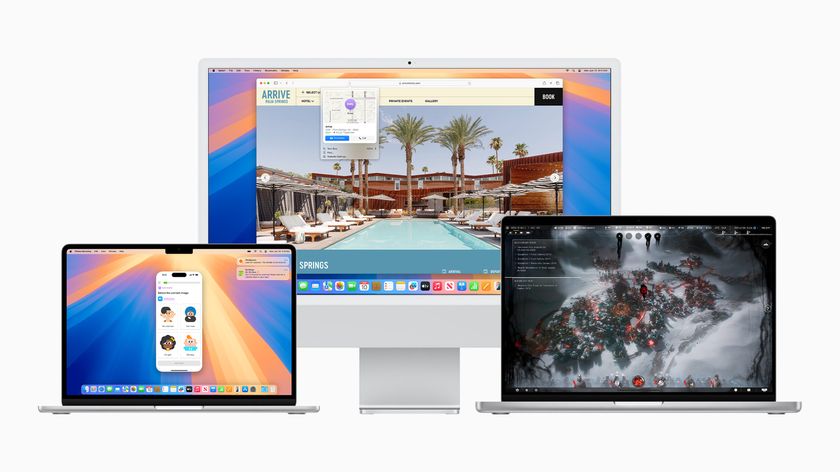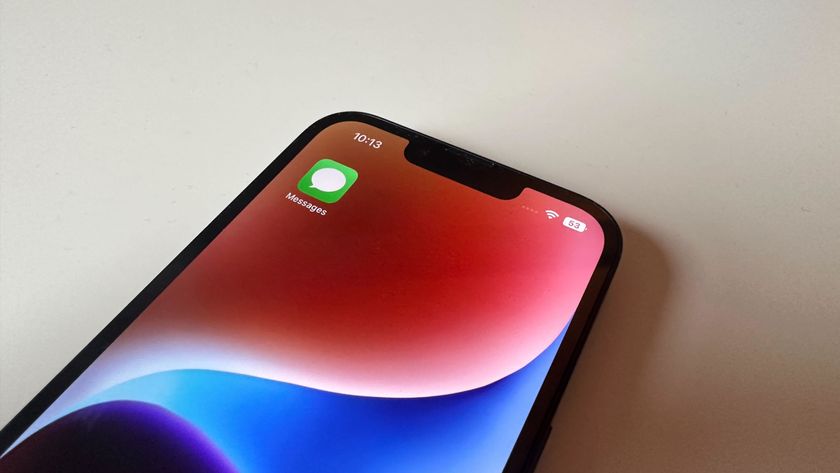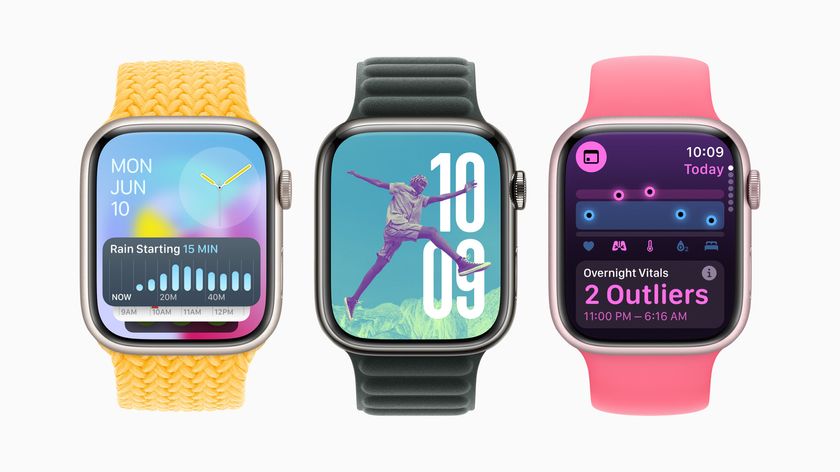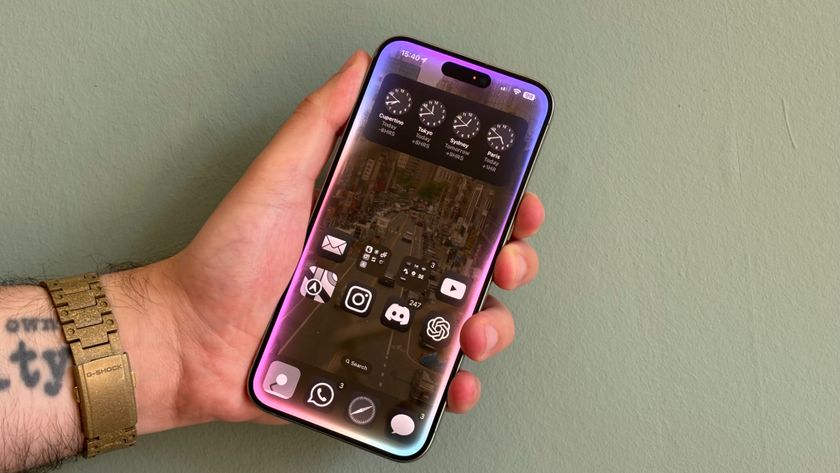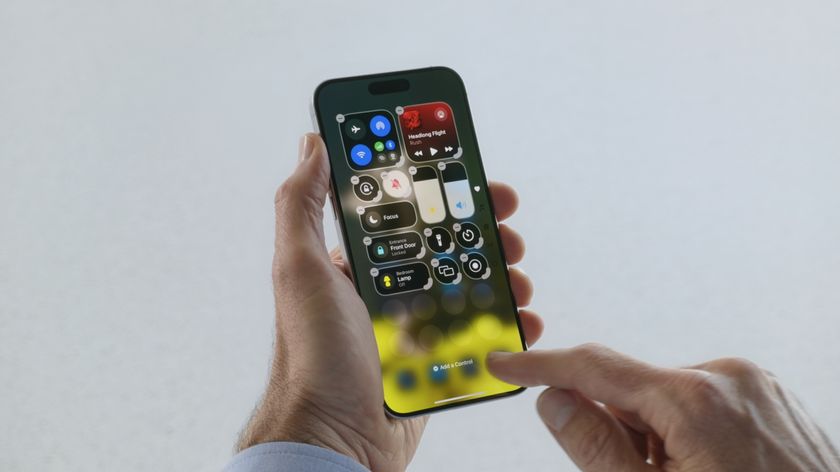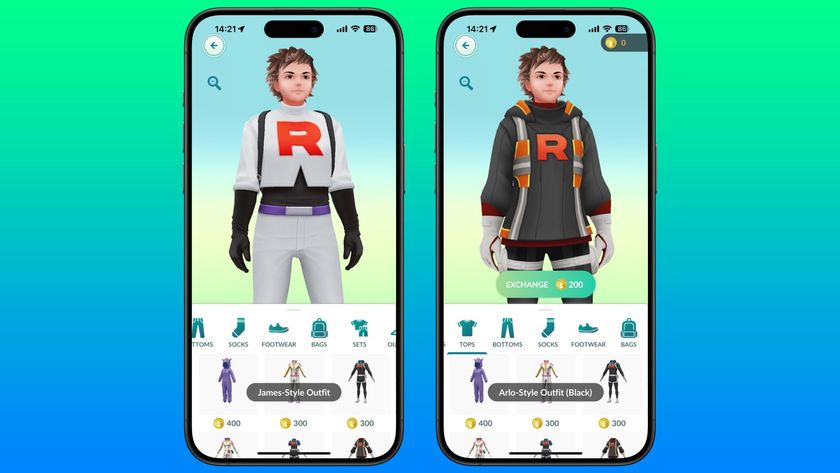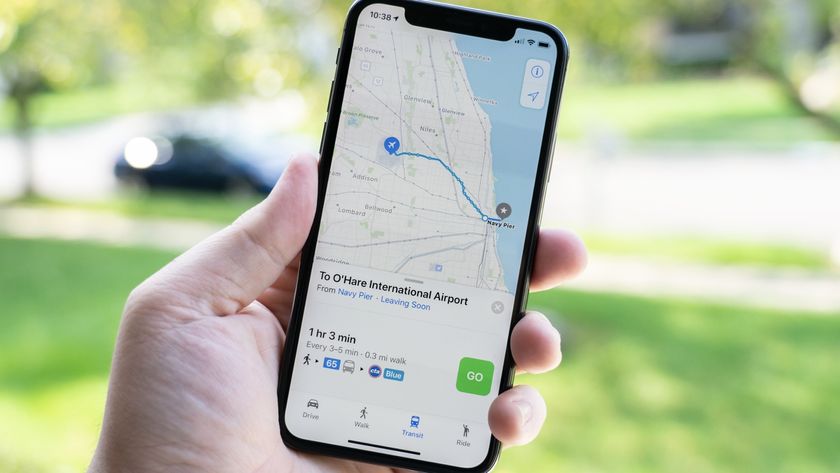How to replace the rear camera in an iPhone 3G or iPhone 3GS
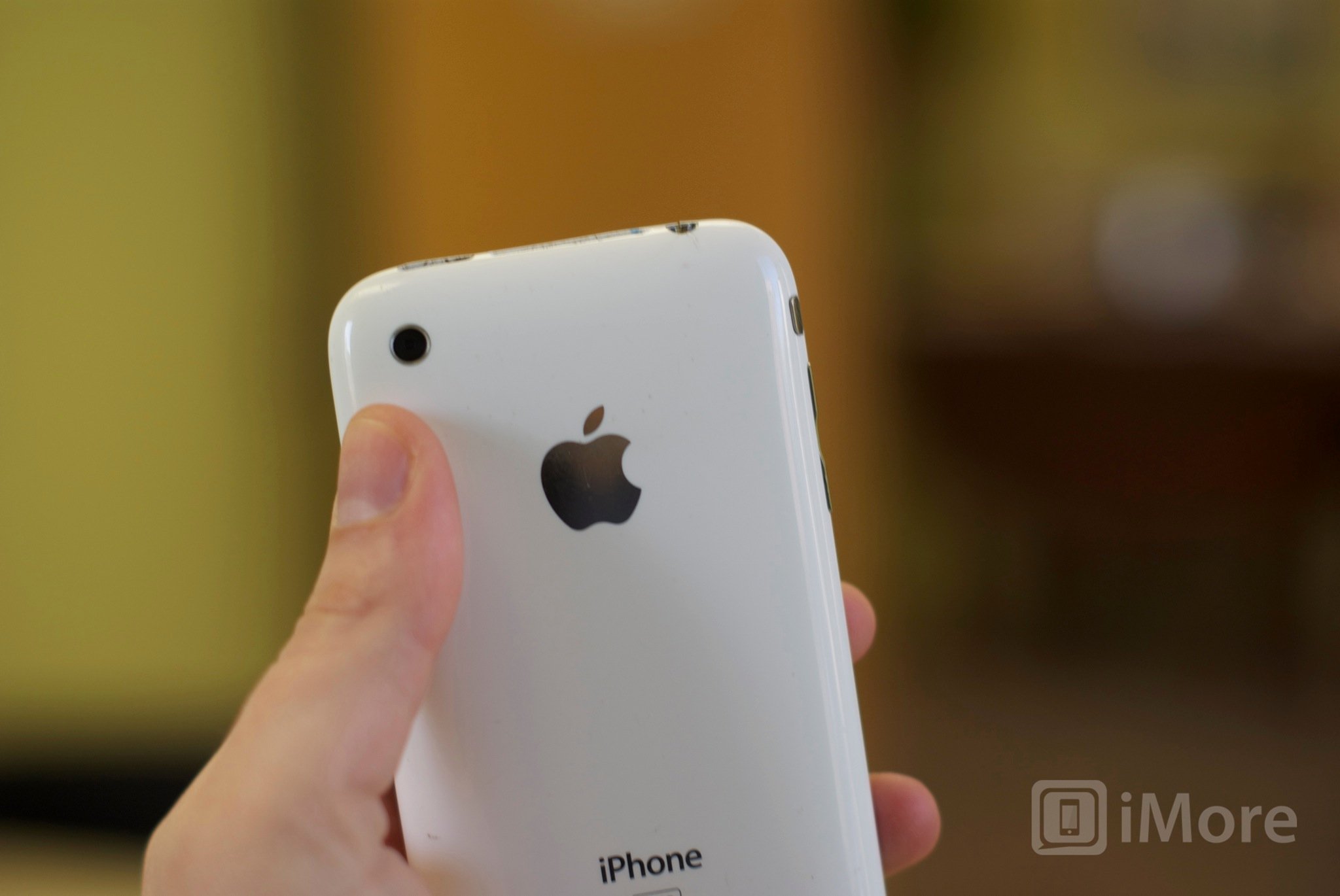
A DIY repair will cost you far less than getting an out-of-warranty repair from Apple, or giving up and buying a new iPhone. All you need are the right tools, the right parts, and the right guide. Just like taking care of your old car can keep it on the road for years to come, taking care of your older iPhones can keep their value higher for resale.
Disclaimer: As with any repair, iMore can not be held responsible for any damage you may do to your device. It's also worth considering that opening up your device to perform any repair or modification can and will void your Apple warranty. If you don't feel comfortable opening your device, don't. Use extreme care and caution when performing a repair on any device.
What replacing a camera will fix
- Distorted pictures
- A blacked out camera lens
It's always worth first trying an iOS restore to rule out a possible software issue before performing a hardware repair. Also, if you cracked the actual glass over the camera lens this won't help you. You'll need to replace the actual back housing of your device instead.
What you need for a DIY camera repair
iMore recommends using only quality and genuine parts from a reputable supplier like iFixYouri. They have quality parts, tools, and much more for all your repair needs.
- A replacement camera assembly
- Suction cup
- Standard #000 Phillips screwdriver
- Spudger tool
- Razor blade
- iSesamo Opening tool (not necessary but awesome for prying up cables and getting under adhesive)
Power off your iPhone

Before performing any repair, always power off your device before removing any screws or parts.
Remove the dock connector screws
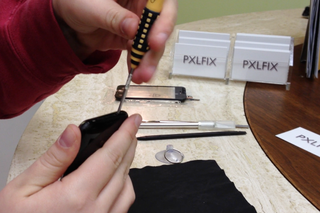
Using your #00 Phillips screwdriver, remove the 2 screws located on each side of the dock connector.
Remove the digitizer & LCD assembly
This part can be a bit tricky so please do this with extreme care so you don't tear any cables during the process. I highly recommend using the suction cup method unless your screen is cracked above the home button for some reason and you can't get a proper seal with the suction cup.
Master your iPhone in minutes
iMore offers spot-on advice and guidance from our team of experts, with decades of Apple device experience to lean on. Learn more with iMore!
Suction cup method (recommended):

The easiest way to remove the digitizer assembly is by using a suction cup.
- Position the suction cup on the screen directly above the home button.
- Using your other hand, hold down the frame while gently pulling up on the suction cup.
- The goal is to get the bottom of the digitizer loose. Do not pull directly up. There are 3 cables attached in the top right of your iPhone. You do not want to tear these. Just pull up until the bottom of the assembly pops out.
- After you have the bottom up you can remove the suction cup.
Spudger/razor blade method (only use this method as a secondary method):
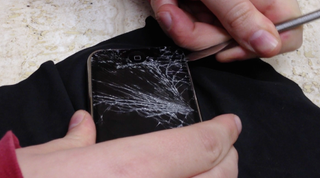
ONLY use this method if your screen is cracked above the home button. If this is the case, you'll need to use a razor blade or spudger in order to remove it. And while you're at it, replace that broken screen!
- Starting in the bottom left hand corner, insert a plastic spudger and gently pry up. Once the first side is starting to pop up, do the same on the bottom right side.
- Run your pry tool along the bottom of the device in order to pop up the bottom of the assembly. Take special care around the home button area.
Remove the cables that attach the digitizer assembly to the logic board:

Once you have the bottom of your digitizer assembly popped up we can remove the cables attaching it to the logic board.
- Gently lift up your digitizer enough to have a clear view of the 3 cables in the top right of your iPhone.

- With your plastic spudger or pry tool, you'll need to pry up the first two cables that attach the digitizer and LCD. They should be labeled with orange stickers numbered 1 and 2. Simply pop them off the logic board gently.
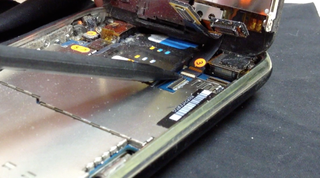
- Underneath these cables you'll see one other labeled as cable 3. This one is a bit trickier as it is clipped down. You'll need to gently pop up the clasp holding it into the fastener. It is a tiny white clip. Simply pop it upwards and the number 3 cable should then slide right out.
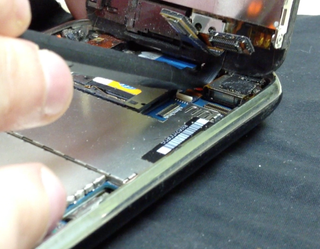
- Remove the digitizer & LCD assembly and set it aside.
Remove your SIM card
Using your SIM tool or a paperclip, either works, remove your SIM card and tray from your device.
Unclip cables from the logic board
<
ol>
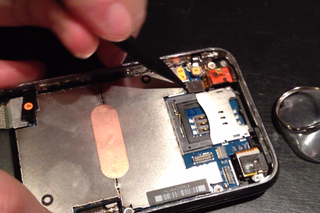
- Towards the top left of the logic board, use your pry tool to pop up the two cables labeled 5 and 6.

- Towards the bottom of the logic board, 3G owners will only see one cable to the left labeled 4. 3GS users will see two cables (one on each side of the dock connector) labeled 4 and 7. 3G users will just pop up the number 4 cable while 3GS owners will need to pop up both the number 4 and 7 cables.
Remove your logic board
- Remove the 8 screws outlined in the video that hold the logic board in place. One of the screws is under a Do not remove sticker at the bottom right by the dock connector. Obviously you'll have to remove the sticker to get to it.
- Make sure you place the screws in an order you will remember. They are different sizes in some instances so you'll need to make sure you put them back in the correct order.
- Notice the screw holding the camera in place has a metal bracket underneath it. Just take care not to lose this as you'll need to put it back during reassembly.
- Gently pop your camera up with your spudger or pry tool.
- Insert your pry tool in the space between the dock connector and logic board and gently pry upward to loosen the logic board.
- Gently grab the bottom of the logic board and slide it out downwards to remove it.
Remove the old camera and connect the new one

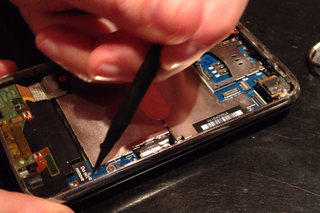
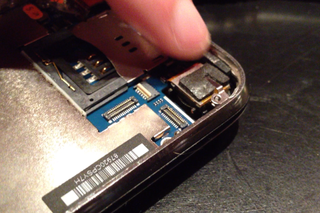
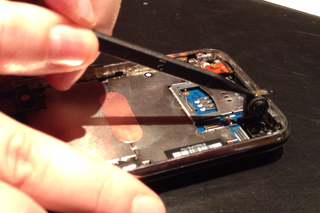
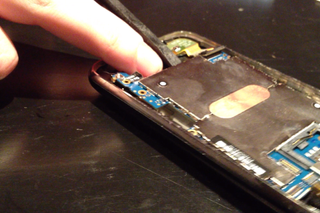

The camera on both the iPhone 3G and iPhone 3GS is connected by a single cable attached to the under side of the logic board. Pop off the old camera with your spudger or pry tool and connect the new one.
And... done!
All that's left to do is to put your iPhone back together. You can watch the complete repair and re-assembly on video below. And if you run into any issues or have other suggestions about mods or repairs you'd like to see us cover, you can check out our mod and DIY forum.
○ Fix a broken iPhone 7 or 7 Plus
○ Fix a broken iPhone 6s or 6s Plus
○ Fix a broken iPhone SE
○ Fix a broken iPhone 6 or 6 Plus
○ Fix a broken iPhone 5c
○ Fix a broken iPhone 5s
○ Fix a broken iPhone 5
○ Fix a broken iPhone 4s
○ Fix a broken iPhone 4 (GSM)
○ Fix a broken iPhone 4 (CDMA)
○ Fix a broken iPhone 3GS or 3G
iMore senior editor from 2011 to 2015.





